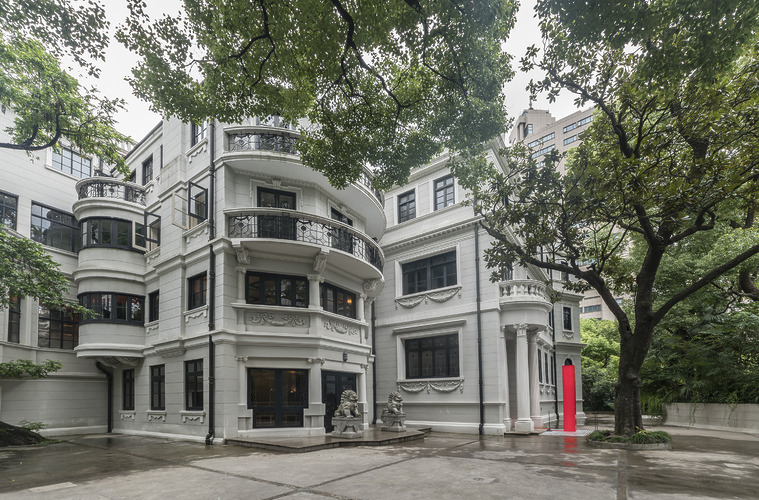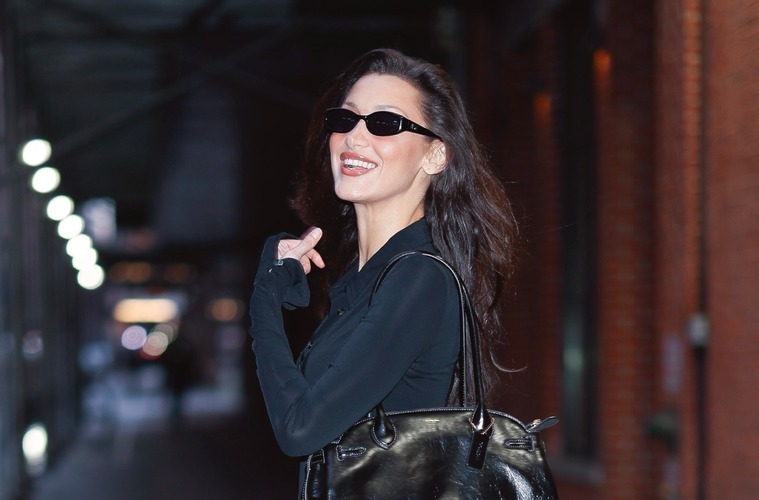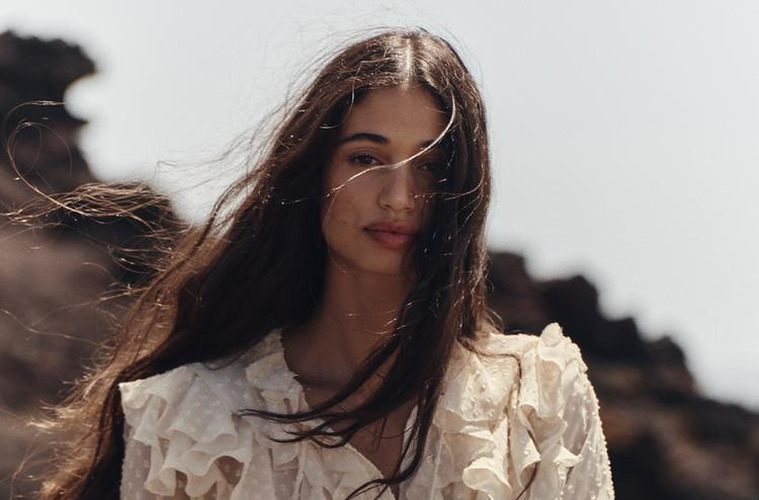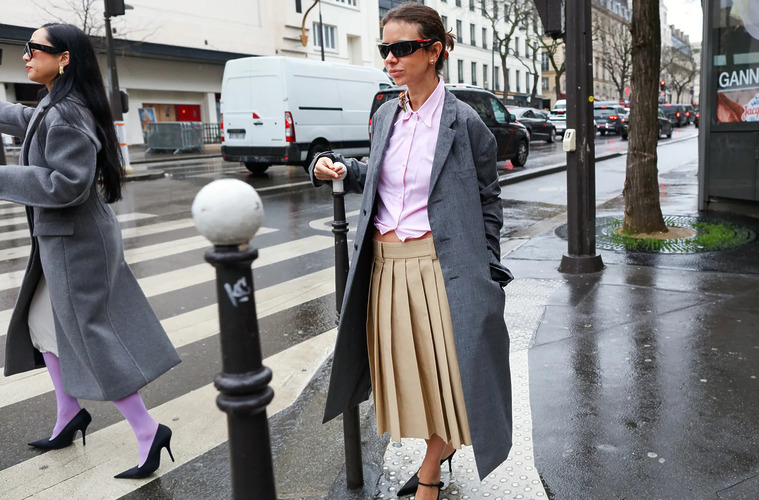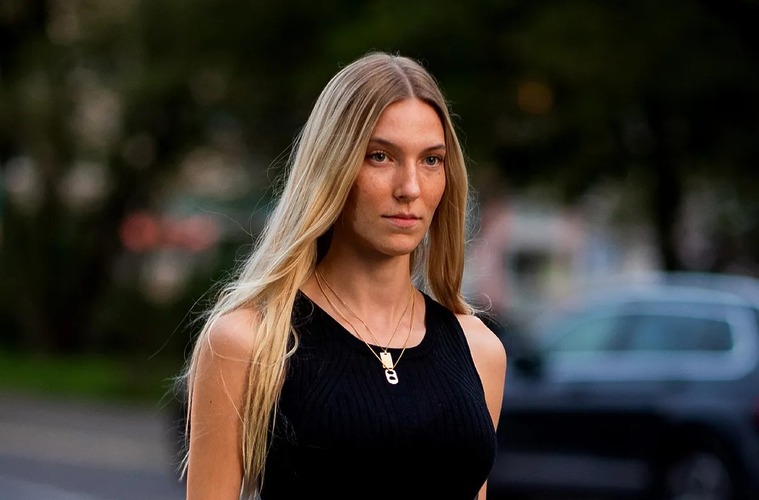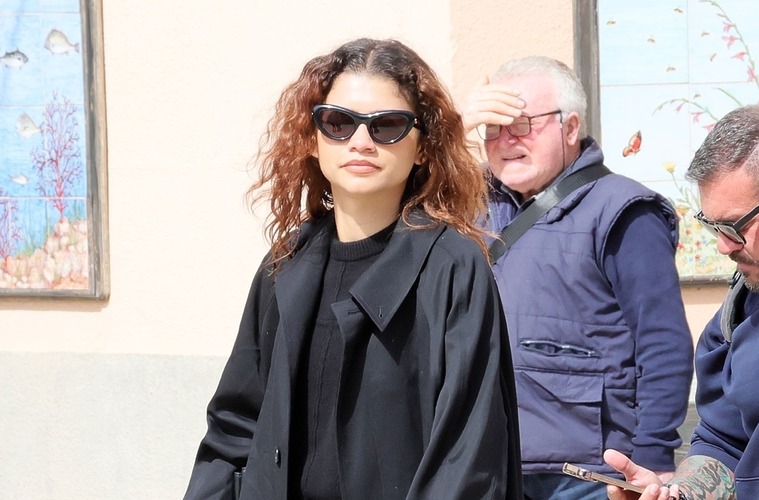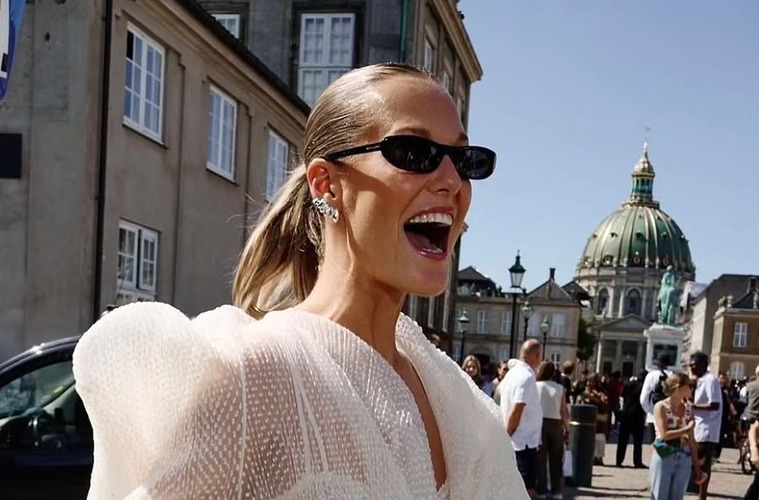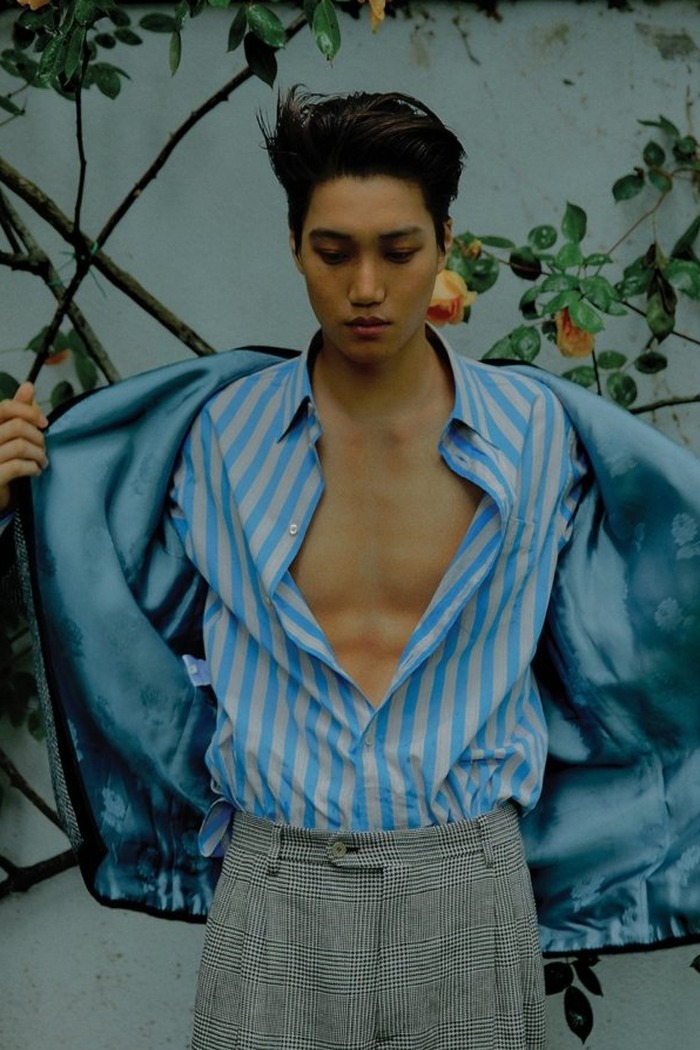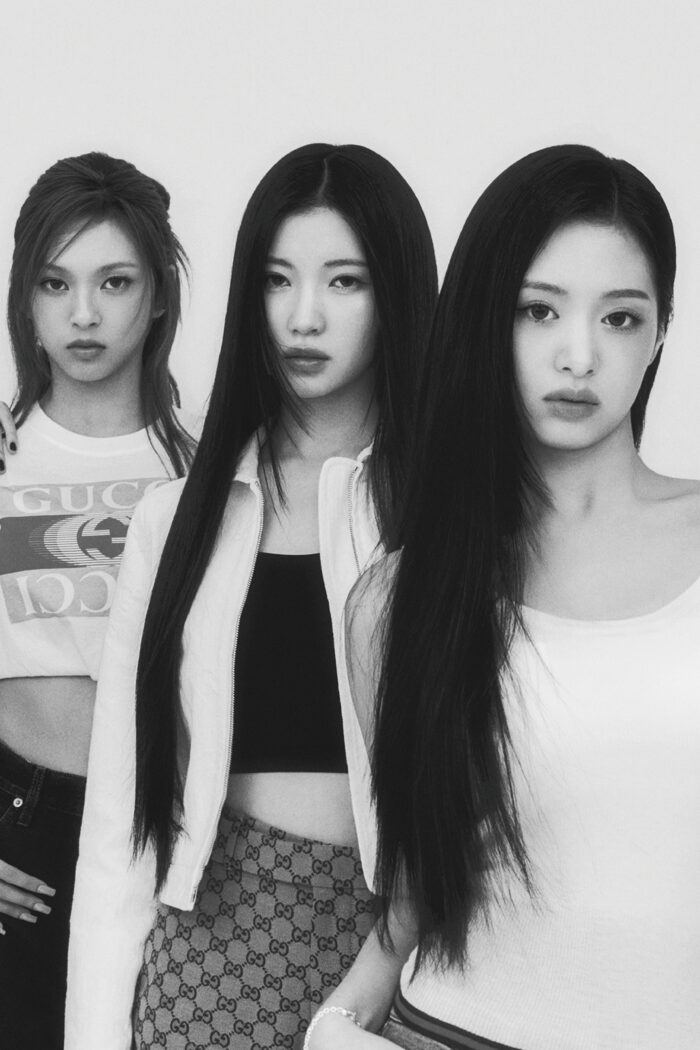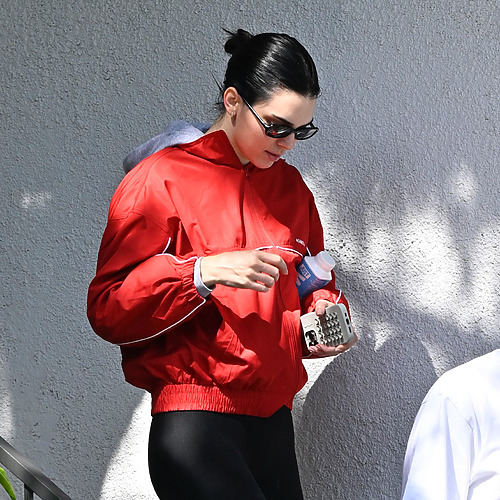수지 멘키스가 품평한 2015 S/S 파리 패션 위크 1
‘보그 인터내셔널 에디터’ 수지 멘키스는 세계에서 가장 유명한 패션 저널리스트다.
<인터내셔널 헤럴드 트리뷴>(현재 <인터내셔널 뉴욕 타임즈>로 이름이 교체됐다)에서 25년 간 패션 비평을
담당한 그녀는 현재 세계 각국의 ‘보그닷컴’을 위해 독점 취재 및 기사를 쓴다.
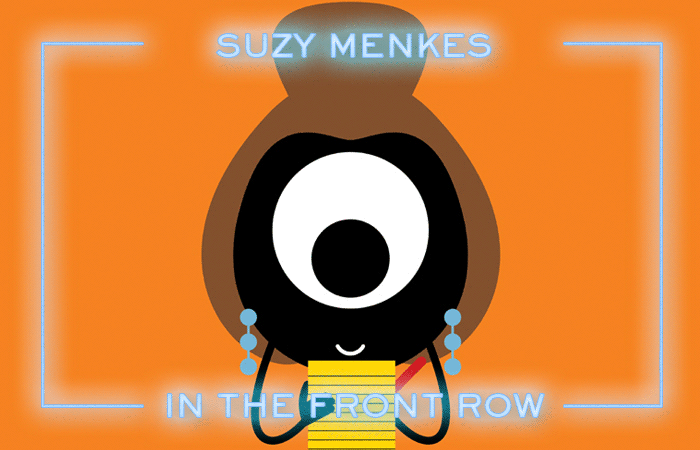
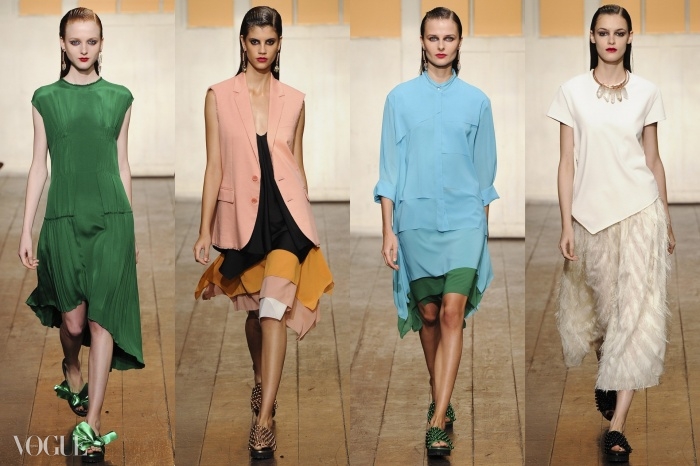
Cédric Charlier
완벽하게 재단된 재킷 위에 몸의 골격을 그리는 듯한 눈에 띄는 스티치들은 꽤 괜찮았다. 이렇게 말하면 무례해 보이겠지만, “아암! 전에 다 봤던 것이다.” 세드릭 샬리에는 그가 이것을 발명이라도 한 것처럼 자기 작품을 제시하는 어수룩한 방법을 택했다. 하지만 딱히 독창적이지 않은 아이디어들을 잘 만들어냈기에 그의 접근법은 용서할 만했다. 스티치로 가봉된 재킷은 새틴으로 된 가로 스트라이프 팬츠와 함께 매치됐고 금박을 입힌 새틴 줄무늬는 옷을 더 매력적으로 만들었다.
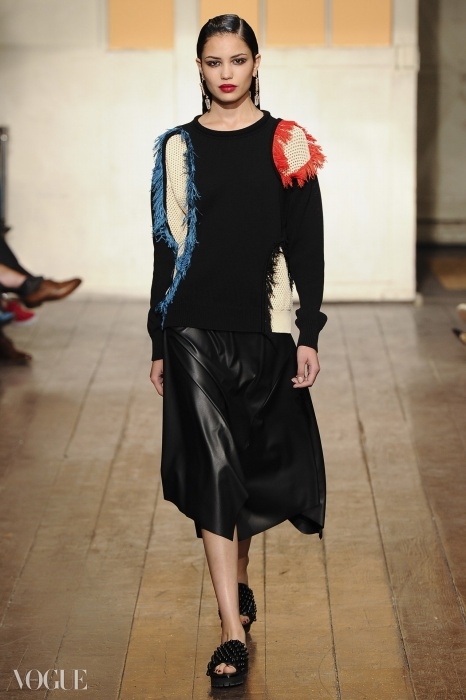
그러나 스티치 스토리에서 빠질 수 없는 건 치맛단에 둘러져 매달린 옷감 조각일 것이다. 적어도 20년 전, 마르지엘라가 런웨이에 가져다 놓은, 잠겨지지 않은 겉옷이나 안에 입는 옷은 샬리에로 인해 잔디색이나 화염색이나 청록색처럼 신선한 색상 조합으로 완성됐다. 니트를 둘러싼 깃털 같은 장식은 몸의 선을 따라가는 다른 방식이었고, 레이 카와쿠보의 공격적으로 파괴된 룩에 비해 단정하고 말끔한 느낌. 하지만 샬리에는 자신의 방식대로 일했다. 특히 마지막 세 벌 가운데 예쁜 드레스 위에 겹겹이 층진 프릴들은 신중하게 작업한 결과였다.
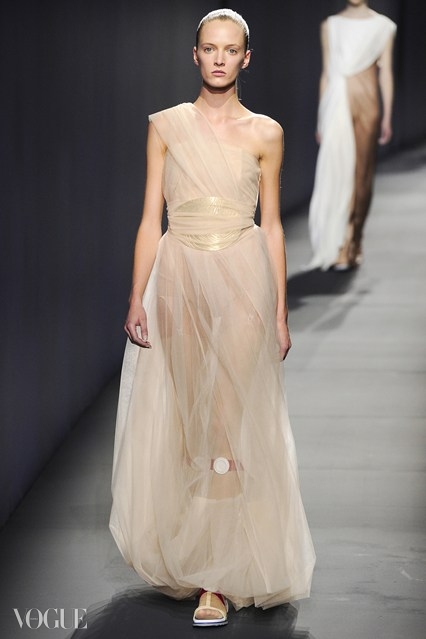
Vionnet
비오네는 비전, 주제, 그리고 감성적인 프레젠테이션을 가졌다. 이것은 브랜드가 납작한 그리스 샌들에서 한걸음 진전하게 만들었다. 허리에 넓은 허리띠를 두른 연한 색상의 그리스식 드레스들을 보여주는 아이디어, 그리고 실제와 달리(약간의 디지털 마법에 의해) 춤추고 뻗고 걷는 런웨이 그림자들을 보여주는 것은 명석하고 영리하며 현대적이었다.
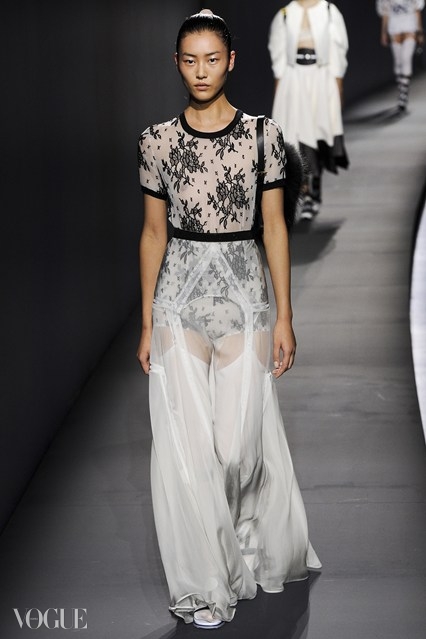
마들렌 비오네의 역사를 고려했을 때, 그 스토리는 여전히 신체를 감싸는 좋은 옷들이다. 이 옷들은 화이트와 베이지, 블랙과 화이트, 또는 약간의 그리시안 블루처럼 두 가지 다른 톤을 띠고 있을 것이다. 하지만 청중의 갈채를 받았던 고가 아쉬케나지와 그녀의 디자인팀으로부터 많은 다른 요소가 추가됐다. 그것들은 짧은 드레스, 쇼츠, 통이 좁은 바지와 주름지고 짧은 토가 스커트였다.
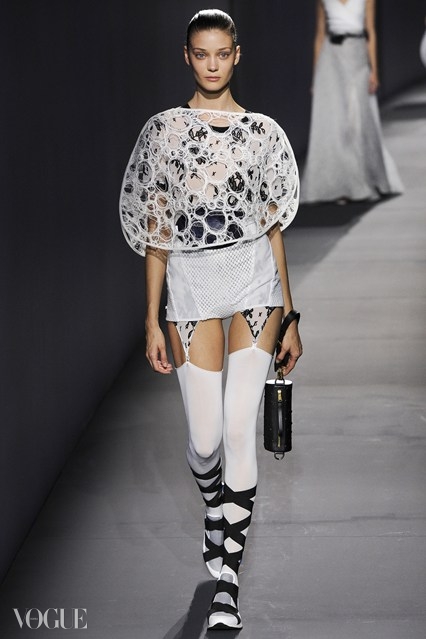
그런 뒤 모든 우아함 중에 허리에 침투한 뱀 같은 벨트처럼 무서운 단어, 성(sex)이 등장했다. 눈에 보이는 브래지어, 가터벨트를 드러낸 다리 사이의 재단된 옷, 그리고 가슴에 찬 마구벨트 등등. 품격 있고 발레리나처럼 우아한 룩에 이런 성적 매력은 필요 없어 보였지만.
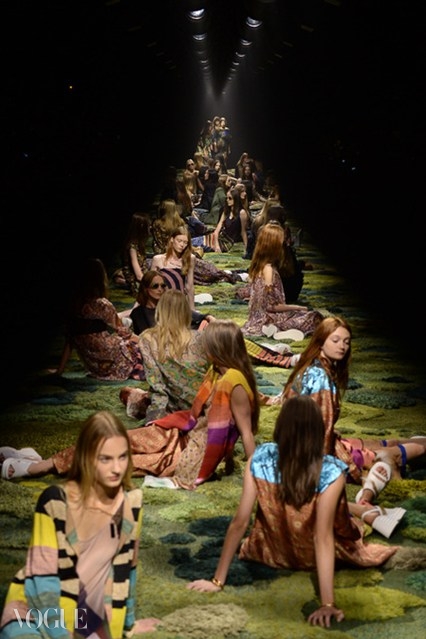
Dries Van Noten
“한 여름 밤의 꿈이예요!” 관객들이 특출 난 쇼를 향해 갈채를 보낼 때 드리스 반 노튼이 눈물을 훔치며 말했다. 모던하고 스포티한 옷들로 해석된 자연에 대한 찬가(Arts and Crafts movement)를 우리가 즉시 이해하지 못했을 거라고 그는 상상했을까?
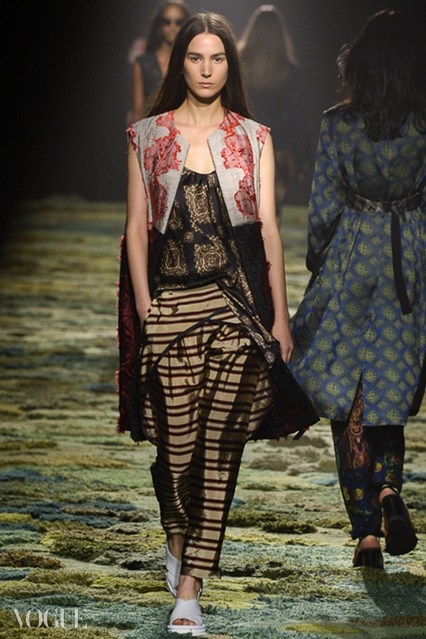
새가 지저귀기 시작하고 음악과 함께 새소리가 들리기 전, 혹은 모델들이 동화 같은 녹색 바닥에 뻗어 앉아 그들의 옷으로 화단을 형성한 후, 런웨이에 깔린 무성한 잔디와 나뭇잎이 가득한 카펫의 풍경은 녹색 꿈을 암시하고 있었다.
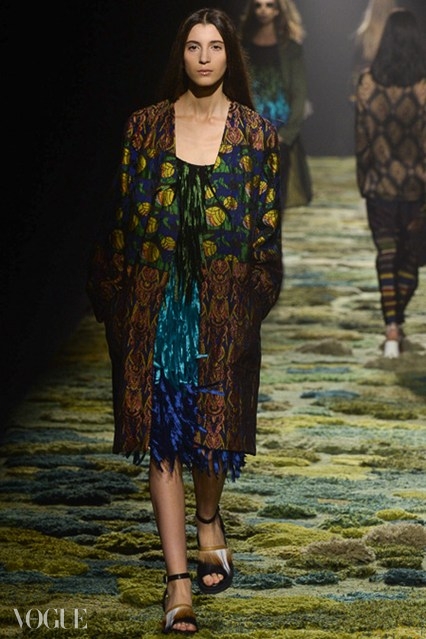
이것은 2015 S/S 패션위크에서 가장 잊지 못할 순간 중 하나였고, 패션의 기억 속에 아로새겨질 것이며, 반 노튼 전작의 일부가 될 것이다. 파리 장식 미술관에서 11월 2일까지 기간이 연장된, 드리스가 관장하는 전시(패션과 예술가를 혼합한 압도적이고 성공적인 전시)가 그로 하여금 자연을 돌아보게 만들었을 것이다. 동시에 드리스는 예술가적 기교로 가득한 새로운 디자인들을 만들었다. 전체적인 느낌은 장식적이지만 단순한 형태에 관한 것이었다.
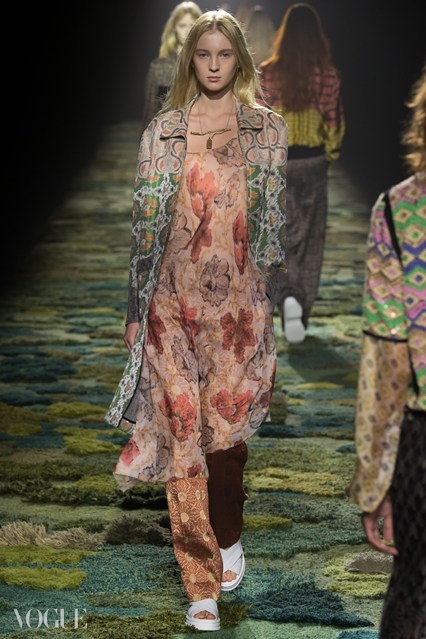
그 형태는 숲 속의 나무들처럼 풍성하고 입체적이었다. 부에노스아이레스 출신의 예술가 알렉산드라 케아요글로우(Alexandra Kehayoglou)에 의해 짜인 이끼로 덮인 카펫은 말할 것도 없었다. 질감이나 또 다른 흥미로운 볼거리들이 이번 쇼의 기본이 됐다. 여기에는 색색의 실크 줄무늬가 적용된 펄럭이는 코트나 털 스웨터들이 포함됐다. 캣워크처럼 이끼로 뒤덮이고 울퉁불퉁한 무늬의 민소매 코트들이 통이 좁은 트라우저 팬츠와 함께 매치됐고 로맨틱한 롱 드레스에는 시폰이 달려있었다.
보다 전형적인 것들은 브레스트 밴드였다. 그건 상의나 맨살 위에 둘러져 있어 피부가 언뜻 비쳤다. 웨지 샌들과 자연의 장신구들을 비롯해 쇼츠, 늘 등장하는 트라우저들은 윌리엄 모리스(William Morris)가 짠 것처럼 보이지 않도록 하는 데서 직물 직조의 신선함을 얻었다. 드리스는 정말이지 자연과 연애했다. 화단에 있을 듯한 핑크색의 핫한 색조들, 빛 바랜 듯한 패턴의 흐릿함 또는 사이키델릭한 덤불 같은 보랏빛 스커트가 대표적인 예다.
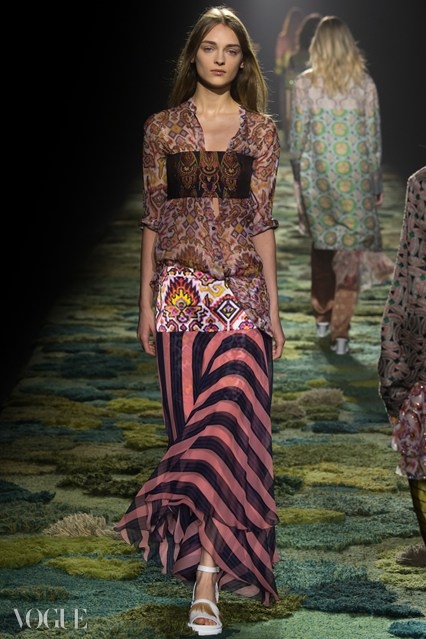
만약 어떤 효과라도 디지털 방식으로 이뤄졌다면 그렇게 보이지 않았을 것이다. 이것은 사과 프린트 옷감과 붉은 자수를 다락에서 발견한 뒤 이들을 함께 심어 그들이 자라 코트가 된 듯 보였다. 가볍게 소화할만한 디테일뿐 아니라 디자이너가 미술 공예 운동을 21세기 버전으로 어떻게 재구성했는지 말로 다 표현할 수 없을 정도. 드리스 반 노튼은 자신의 벨기에식 정원을 자랑스러워하기로 유명하다. 하지만 이것은 자연의 아름다움을 꽃의 흐트러짐으로 표현한 것을 초월했다. 한 마디로 디자인과 상상, 그리고 사랑의 걸작이었다.

Balenciaga
베이비 노스 웨스트(Baby North West)는 발렌시아가 쇼의 백스테이지에서 조용했으나 그녀의 부모인 킴(Kim)과 칸예(Kanye)는 각자 디자이너인 알렉산더 왕에게 뭔가 말할 게 있었다. “무대가 좋았어요.” 드라이 아이스가 구름처럼 피어 오르는 공간에서 유리로 된 높은 캣워크를 가로지르는 거울 타일 길에 대해 언급하며 그들은 한마음로 말했다. 다행히도 이 특별한 배경이 쇼를 완전히 무색하게 만들진 않았다.
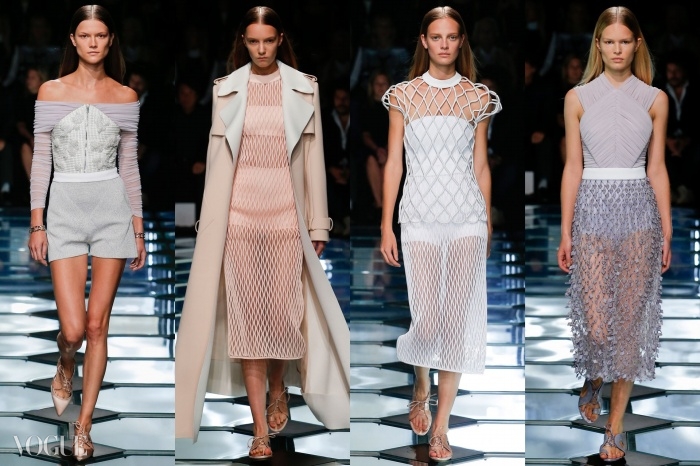
왕의 그물망 사용이 되풀이 되긴 했지만, 발렌시아가 이미지를 스포츠로 활기차게 만들겠다는 전제는 그의 예전 컬렉션이나 개인적 비전과 일치했다. 그리고 전체 효과들이 장식 개념들을 가뿐히 만들었다. “화려함과 꾸밈이예요. 하지만 이것을 보여주는 저만의 방법을 찾고 싶었어요.” 사각형 무대를 평소처럼 뛰어다니던 왕이 말했다.
나는 이 혈기왕성하고 빠르게 진행되는 쇼에서 대체 무슨 일이 일어나고 있는지 확실히 안다고 말하는 사람이 있다면 한번 보고 싶다. 하지만 바로 여기에 요점이 있다. 그물망 스포츠 셔츠와 스커트, 투명한 광택 톱, 신축성 있는 슬림한 드레스, 목부분에 X자 형태로 주름 잡힌 보디스, 하이 웨이스트 쇼츠와 함께 입은 반투명 톱, 그리고 드레스들 위에 걸쳐진 얇은 재킷들과 코트들처럼 다양하게 재단된 옷들이 그 요점이다. 강한 스포츠적 요소가 라일락, 페일블루, 핑크 베이지 같은 파스텔 컬러로 인해 부드러워지면서 결국 이것은 젊음의 활력이 됐다. 모든 게 왕이 지닌 비전과 발렌시아가를 빠른 속도로 달리게 만든 에너지 덕분이다.
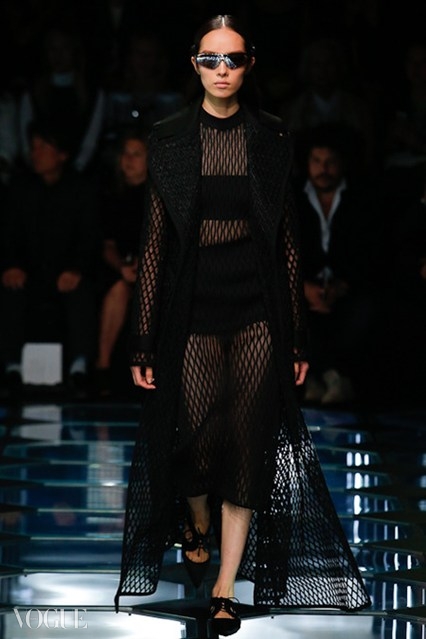
그러나 목표가 정확히 뭐였나? 극도로 매력적인 미러 안경을 포함, 여자들이 살만한 아이템들이 있었다. 옷들은 모던하면서도 날씬했고 만약 가격만 적당하다면 잘 팔릴 것이다. 하지만 발렌시아가의 핵심은 크리스토발 발렌시아가와 그의 고상함이라는 유산이 아니다. 이것은 알렉산더 왕 그 자체다. 옷들은 그의 개인적이고 창의적 이미지의 업스케일 버전이다. 그렇게 생각해보면 멋지고 강력한 쇼였다.
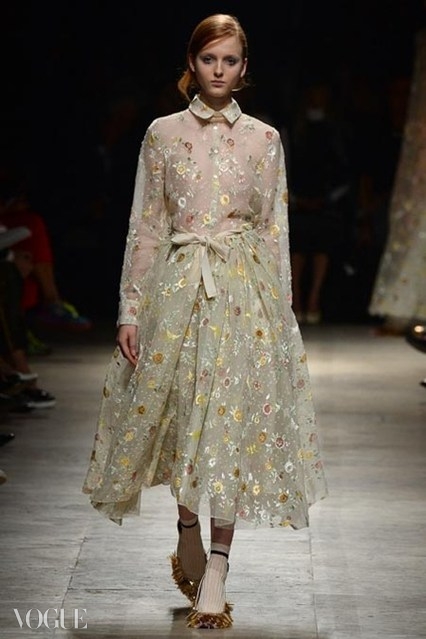
Rochas
디자이너 알레산드로 델라쿠아는 로샤에서의 두 번째 출전에서 보다 가뿐해졌고, 또 그 이상이었다. 그의 옷들은 베일로 덮였으며 속이 비칠 정도로 얇은데다 완전히 투명했다. 특히 살갗을 덜 노출시키고 상반신과 몸의 많은 부분을 상상의 여지로 남긴 것이 가장 매력적이었다. 모든 것은 주제에 대한 디자이너의 설명에서 썩 괜찮게 들렸다. “처녀의 수줍음과 움트는 관능성 사이예요.”
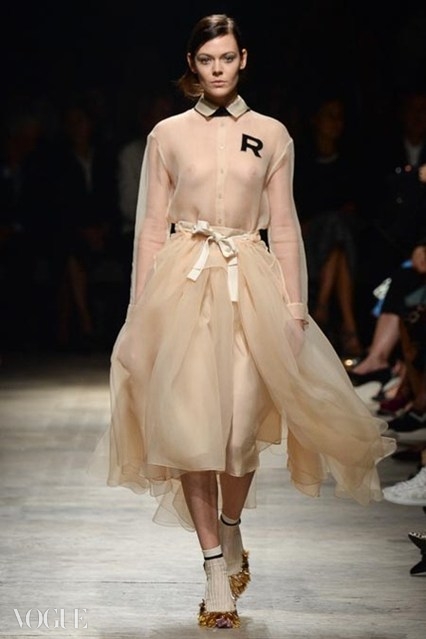
이것은 수녀복을 닮은 정숙한 칼라들이 육안으로 보이는 가슴을 향해 아래로 이끄는 모습으로 해석됐다. 지난 시즌의 꽤 무겁고 꾸뛰르적인 시도 이후, 공기 같은 가벼움이 환영 받았다. 델라쿠아는 일상에서 지나친 노출을 방지하기 위해선 벨트로 묶인 가벼운 오간자 코트가 슬립과 함께 입는 거라고 분명히 말했다. 또 다른 살갗을 노출하는 부분들은 오버 니 스커트의 둥근 레이스 밑단 부분처럼 아름답게 장식돼있었다.
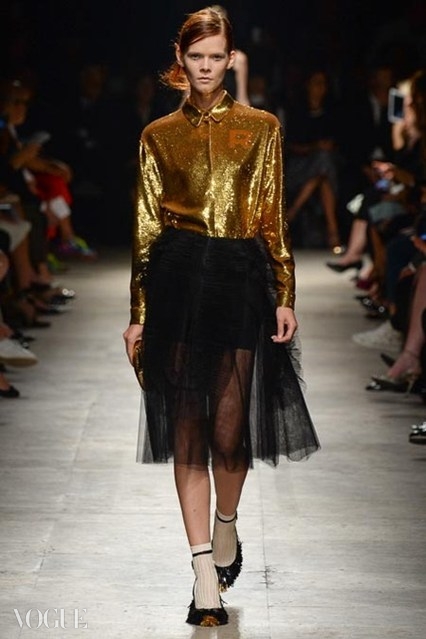
주의를 아래로 끌어당기는 또 다른 아이디어들은 풋웨어였다. 양말들과 메탈릭한 녹색 깃털들이 흔들리는 앵클 스트랩 슈즈가 대표적인 예다. 로샤의 스토리는 대문자 ‘R’ 심볼로 쓰였고 심플한 드레스의 목부터 종아리까지 작은 꽃들이 싹을 틔우는 듯 사용됐다. 더 많은 블랙 옷과 금빛 짧고 빛나는 스토리도 있었다. 이번 쇼를 통해 로샤를 새롭게 만드는 감각을 인정받아, 델라쿠아는 복잡한 파리 패션위크에서 새로운 위치에서 차지했다.
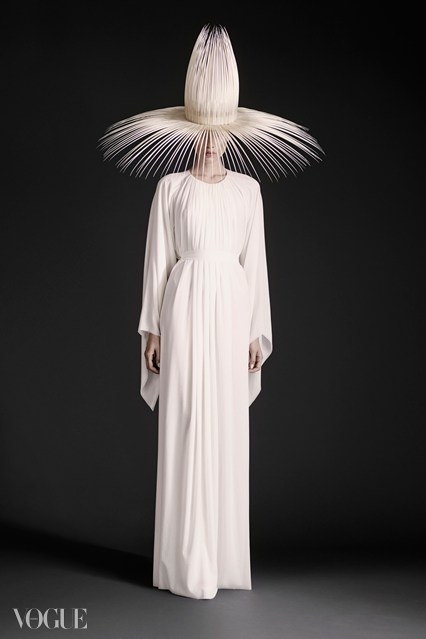
Gareth Pugh
잉글랜드 남서지역의 신비한 드루이드(Druid)식 건물인 스톤헨지와 동시대의 이교적 형태인 위커맨이 가레스 퓨의 영감이었다. 세 개의 분리된 영화 형태로 기획된 뉴욕의 시각적 프레젠테이션과 그가 파리에서 선보인 컬렉션을 위해 이 영국 디자이너는 역사를 깊게 파고 들었지만 이해하기 쉬운 옷들을 완성했다.
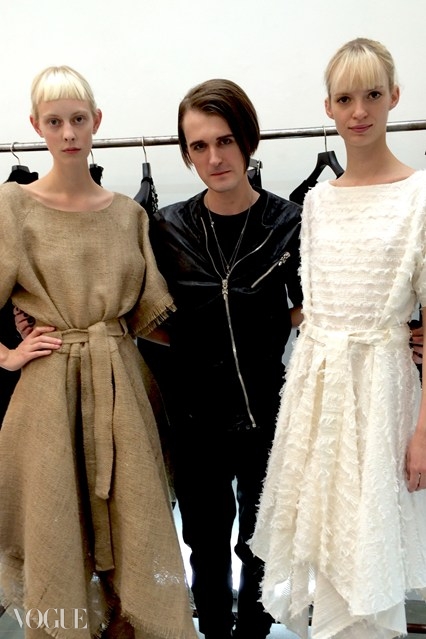
퓨는 심오한 사상가인 동시에 그의 옷은 독특하다. 다른 진보적인 디자이너들과 비슷한 아이디어를 표현한다고 해도 말이다. 가능한 적은 이음매를 지닌 보디와 관련된 재단의 중요성, 촉각적인 재료 사용 등을 떠올려 보라. 그런 효과들은 두 개의 드레스에 합쳐져 나타났다.
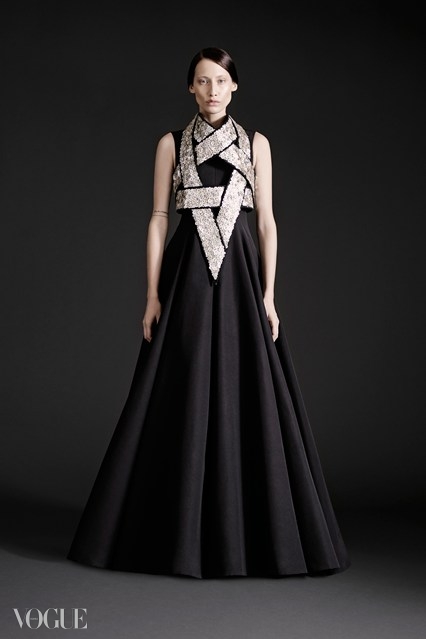
하나는 마대자루 질감의 가공되지 않은 삼베 드레스, 다른 하나는 장식이 달린 시폰 드레스. 둘 다 짚으로 만든 인형과 5월의 여왕이라는 고대 영국 전통을 대표하며, 솔기 없이 몸을 감쌌고 몸에 딱 맞았다. 두 번째 옷은 현대 여성이 어디서든 입을 만한 옷. 영화의 재상영을 보는 것은 좋았다. 마녀모자 같은 의례적인 장신구들과 함께 춤을 통해 옷을 보여주는 그의 기획 의도를 실현시켰기 때문.
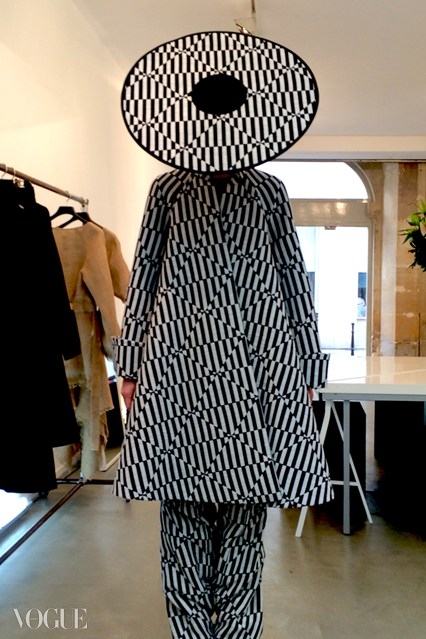
디자이너로서 그는 성숙해졌고 망토모양의 코트가 달린 비교적 심플한 블랙 드레스 같은 옷도 준비했다. 블랙 드레스와 코트 둘 다 진주로 장식됐고 영국 ‘진주 여왕들(Pearly Queens)’의 시기와 잘 맞았다. “창조성과 큰 관련이 있지만, 오래 전 잊혀졌던 미신들에 대한 것입니다.” 고대 농업, 수확기, 바다의 여신, 죽음과 부활에 대한 생각을 언급하며 퓨가 말했다. 그의 아버지가 경찰이었기에 1973년 영화 <위커맨>의 경찰 주인공에 대한 언급은 디자이너에게 있어 개인적 의미를 지닌다.
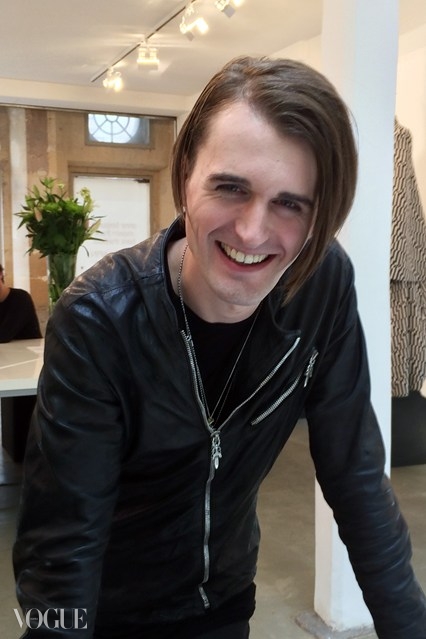
또 2015 S/S 컬렉션의 틀 속에서 더 친숙해진 퓨의 드레스들은 단색의 다이아몬드 패턴 그래픽을 유지한 채 구성에 있어서는 다소 복잡하지만 몸에는 날씬하게 맞았다. 퓨가 자신의 옷을 점점 더 접근하기 쉽게 만들고 있기에 이 멋진 컬렉션은 부활로 묘사할 수 없었다. 하지만 진주 단추가 달린 시폰 톱이나 삼베로 짜인 듯한 옷들은 현실로 돌아온 느낌인데다 지구로 내려온 듯 보였다. 그리고 디자이너는 이를 확인해줬다. “저는 우주선에서 내린 무엇보다는 지구에 관한 어떤 것이 되길 원했어요.”

Balmain
발망 쇼는 여성에게 성적인 힘을 건넸다. 보다 더 자세히 말하자면, 한 여성, 바로 리한나에게 넘겨줬다. “제 세대를 유념하고 있어요. 그리고 저의 최근 쇼의 애프터 파티에서 리한나가 크레이지 호스(Crazy Horse) 밖으로 걸어 나오는 걸 기억해요.” 발망 디자이너인 올리비에 루스테잉이 말했다. “시스루 옷 같은 ‘섹시함’을 탐험하고 싶었고, 마돈나의 책 를 떠올렸어요.” 강인한 여성들(특히 가수들)이 검열에 얽매이기 거부하고 있음을 인터넷이 증명하고 있다고 믿는 디자이너의 설명이다.
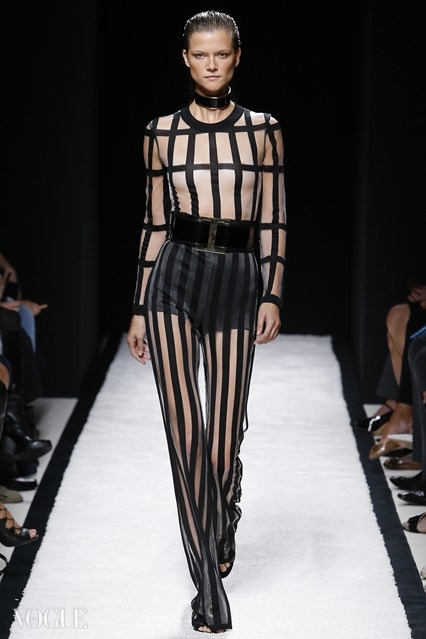
그렇다면 위에서 언급된 여성들(현재는 리한나, 전성기 때의 마돈나)중 어느 한쪽이 이번 쇼의 관객으로 앉아있는 것을 상상해보자. 두 스타들은 분명히 드러난 속살을 봤을 것이다. 런웨이에는 흑백의 석쇠 형태 소재들, 그 아래에서 피부를 드러내는 투명한 비닐, 허리 부분의 절개선, 다리 부분이 시폰 소재로 된 블랙 시스루, 전략적인 틈새를 가진 옐로 드레스, 혹은 반짝이 스트라이프로 계곡을 이룬 원시스(onesies)들이 등장했다. 피부를 위한 피부, 톰 포드의 런던 쇼 이후로 그렇게 많은 노출이 가능할 수는 없었다. 분명히, 그리고 아마도 두 디자이너의 세대 차 때문에 발맹 옷들은 크게 관객들의 비웃음을 사지 않고 ‘스웨그’를 타며 런웨이를 걸어 내려갔다.
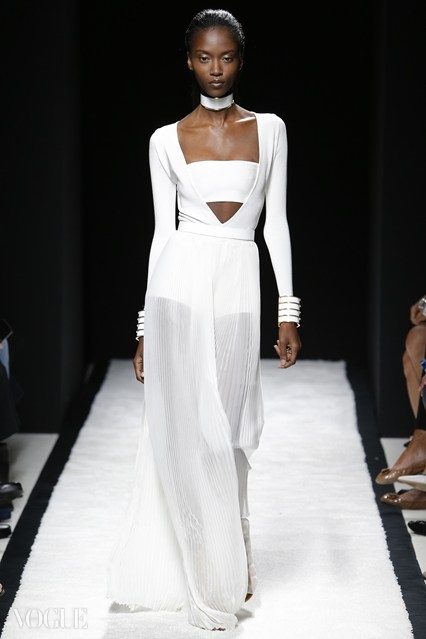
잠재된 상스러움에 대한 첫 번째 보호막은 그곳의 작품들이 꾸뛰르의 기준이 되는 발맹 아뜰리에다. 견고한 옷감이 가슴을 가로지르며 몸에 끼얹듯 내려앉은 화이트 드레스는 하나의 보물이었다. 파리 스튜디오에서 제작된, 몸을 가로지른 그 밴드들은 구속이 아닌 우아하게 숨겨진 모습. 그런 뒤 테일러링이 있었다. 흑백 줄무늬와 체크로 된 빳빳한 옷들, 혹은 블랙, 화이트, 옐로 팬츠 정장이 그것. 레드, 로열 블루, 카나리아 옐로, 화이트로 구성된 수직 줄무늬 톱을 입고 길거리에 나가려면 약간의 용기가 필요할 것이다. 하지만 이 옷들을 입은 여성은 남들이 알아봐주기를 원한 채 리무진으로 발을 옮길 것이다. 맨 앞줄에 있던 킴 카다시안 정도?
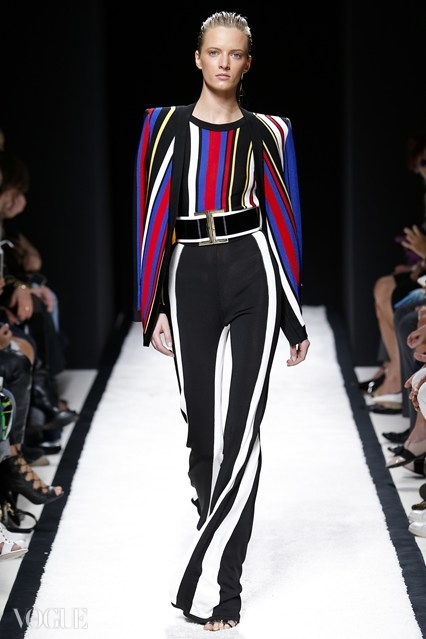
사실 발맹은 모든 사람의 취향은 아닐 것이다. 그렇다고 이 유혹적인 옷들을 ‘감각이 없다(tasteless)’라고 표현할 것까진 없다. 그들은 젊음의 낙천주의와 아주 별난 장난기를 모두 가지고 있으니까. 백스테이지에서 발맹 하우스의 대표인 알랜 하이베린(Alain Hivelin)이 지난 분기에 매출이 25%나 상승됐다고 했던 말을 다시 떠올려 보면, 루스테잉은 확실히 뭔가 올바른 것을 추구하고 있는 것이다. 그건 잠재 고객들을 돌아서게 만들었던 바이어들로부터의 요구이기도 했다. 애프터 파티에서 발맹의 투명 톱을 입은 리한나가 주목을 받은 것에 대한 올리비에는 태평스럽게 얘기했다. “제가 질투했냐고요? 아뇨, 저는 영감을 받았을 뿐이죠!”
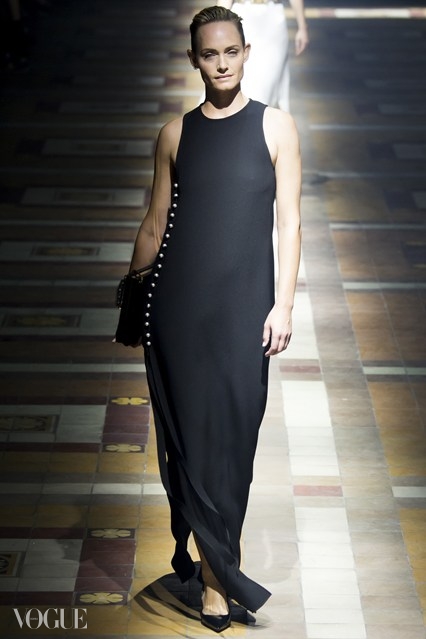
Lanvin
알버 엘바즈(Alber Elbaz)가 만든 랑방 125번째 생일 축하 선물은 21세기 여성을 위한 패션으로 된 부케였다. 그것은 새틴과 진주, 저지와 양단, 그물망과 레이스로 돼있었다. “제가 사랑하는 소녀들에게 돌아갈 거예요.” 여전히 호리호리하지만 여성스러운 모델들이 런웨이를 걸어나오면서 강력하고 감정적이기까지 한 쇼 시작을 연출한 디자이너가 말했다. 앰버 발레타(Amber Valetta)는 물줄기가 떨어지는 모양으로 진주단추가 달린 슬림한 드레스를 입고 매끄러운 맨 살을 드러냈으며 비올레타 산체스(Violetta Sanchez)는 어깨의 한쪽이 잘린 부드러운 옷을 입고 쇼의 시작을 열었다.
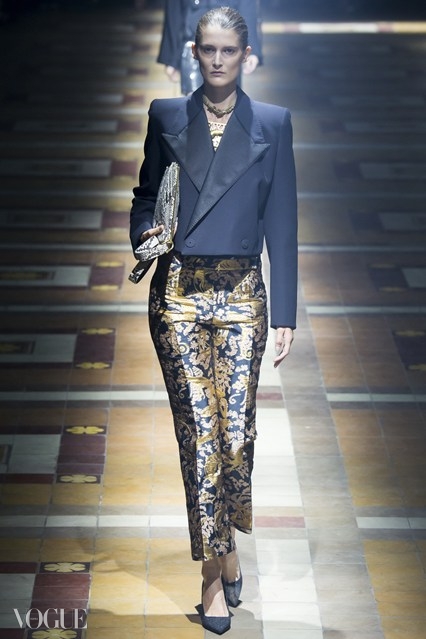
요즘 옷을 제공한다는 개념은 단지 다른 여자들뿐 아니라 더 깊은 여성적 요구와 감정들을 향하는 게 더 맞다. 그런 비전 안에서 알버 엘바즈는 엄격한 테일러링(옷을 입은 사람이 서둘러 집을 나간 것처럼 가봉 스티치들로 표시된)의 모든 것을 브로케이드로 표현했다. 그런 다음 그 멋진 촉각적 소재로 스키니 팬츠를 만들고 깔끔한 턱시도 재킷과 함께 매치했다. 이번 시즌, 브로케이드를 선보인 랑방과 프라다는 현대 여성들을 위한 패션에서 탁월한 두 축이자 특별한 의미를 갖는 브랜드다.

하지만 알버의 비전은 모(母) 브랜드의 역사에서 추출된 요소들로 이뤄졌다. 아카이브를 다시 방문하면서 그는 파우누스 형상부터, 잔느 랑방만의 하늘색 음영, 랑방 향수의 상징인 아르페쥬(Arpège)까지 랑방 심장부인 20세기의 반향을 재해석했다. 나는 그 단어가 브랜드의 상투적 문구가 되기 전에 만들어진 향수 로고에 대해 생각했다. 무도회장을 향하는 아르페쥬의 엄마와 아이는 가족 생활을 수용한 하이패션의 유일한 이미지일 것이다. 이번 컬렉션의 여성들은 그들이 살아왔고 사랑했으며 겪어온 개인적 경험들을 디자이너의 멋진 옷에 투영한 듯 보였다. 오버사이즈 재킷에서부터 페이즐리 시폰 퍼프 소매까지. 그게 바로 이 컬렉션이 당신이 런웨이에서 거의 찾을 수 없었던 감정으로 채워진 이유다. 덕분에 이번 컬렉션은 긴 박수를 받았다. 그건 일상의 옷일 수 있고, 엘바즈의 표현대로 아주 행복한 옷들이다.

Nina Ricci
나는 이번 여름 프랑스에서 있었던 세계 2차대전의 종결을 반영한 감동적 의식에서 영감 얻은 디자이너를 보고 싶었다. 그리고 니나리치의 피터 코팽보다 더 섬세하고 가벼운 낙관론으로 이를 구현한 사람은 없었다. 그는 ‘수선해서 오래 사용하라(Make do and mend)’는 영국의 전시표현을 인용했지만 그건 파리의 꾸띄르 하우스에서도 적용됐다. 섬세한 레이스로 된 칵테일 드레스 단에 달린 성긴 실들은 수선을 필요로 하기보다 더 우아하게 보였다.

쇼는 스퀘어 숄더 자켓과 40년대 느낌으로 시작됐다. 하지만 와이드 라펠과 옆 트임이 있는 핑크색 스커트에 의해 전쟁 이후의 낙관적인 느낌이 감돌았다. 미묘하게 감각적인 넓은 목선과 둥근 튤립 프린트와 함께 매력적이지만 가벼운 드레스들로 코팽은 낮을 밤으로 부드럽게 잘 이어갔다. 코팽은 니나리치에서 흠잡을 데 없이 완벽한 쇼를 보여줬다. 이 쇼는 그가 뉴욕의 오스카 드 라 렌타로 가기 전, 마지막 시즌으로 예상된다. 그는 매 시즌 여성복을 제시하는 비범한 솜씨를 지닌 디자이너로, 부진하거나 이상해서 하우스에서 방출된 것은 아니다. 그는 패션계의 귀중한 자산이듯 오스카의 보배가 될 것이다.
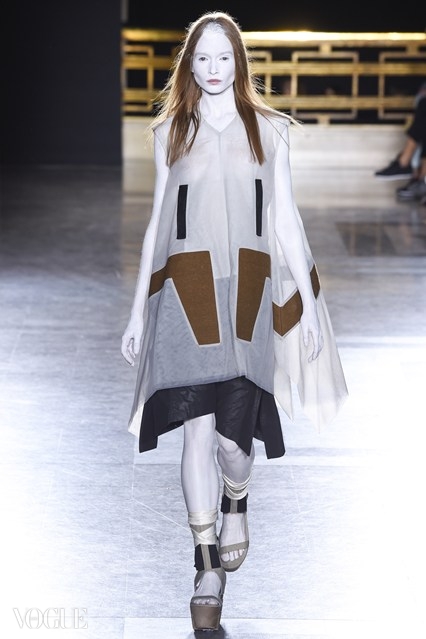
Rick Owens
컬트적인 모습으로 크고 무거운 신발을 쿵쿵거리며 다니는 것으로 유명한 릭 오웬스 쇼. 튤 드레스의 반짝임은 디자이너의 비전에 기발함과 경쾌함을 더했다. 네덜란드의 전통 나막신 같은 무겁고 동물 발톱을 지닌 신발들이 있었고, 공상과학적이고 초현대적인 느낌마저 감돌았다. 하지만 옷들은 말 그대로 깃털처럼 가벼웠고 해조류와 이끼 같은 연한 적갈색과 비슷한 색을 풍겼다. 모델들의 늘어트린 머리는 요정(오웬즈와 가장 어울리지 않을 법한 단어)처럼 보였다.
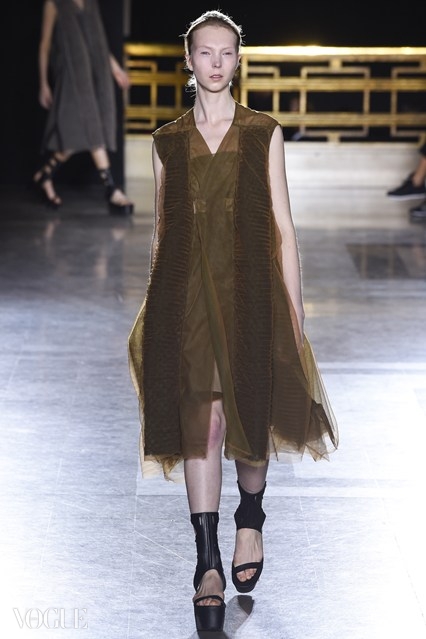
“제가 할 수 있는 것 중 가장 삐딱한 게 뭔지 생각했어요. 튤처럼 가볍고 연약한 뭔가로 말이죠”라고 릭이 말했다. “그런 뒤 어떻게 하면 건축적이고 모던하며 브루탈리즘(Brutalist) 적으로 만들 수 있을지 생각했어요.” 디자이너는 그것을 밑단의 양쪽에 많은 옷감이 달린 A라인 드레스로 만들었다. 몇몇은 의도적으로 투명하게 만들고 나머지는 겹쳐 입었다. 때로 그 소재는 더 큰 구조를 갖춘 채 어깨와 목 주변에 놓여 있었다.
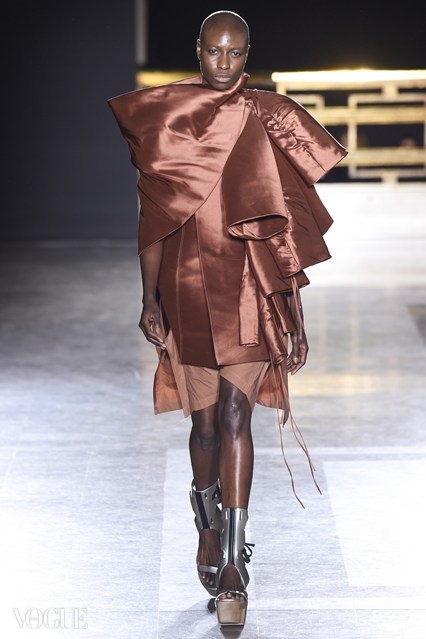
크고 무거운 글래디에이터 가죽과 토가 드레스들로 그들의 맹렬한 움직임을 과시하던 미국 여학생 클럽의 아가씨들이 파리 런웨이로 ‘걸음’을 옮긴 놀라운 광경이 겨우 일년밖에 안됐나? 이번 쇼는 연약함과 부드러움의 정반대에 있었다. 작년에 고인이 된 폴란드 작곡가 보이치에크 킬라르(Wojciech Kilar)의 음악은 부드러웠지만 뇌리에서 떠나질 않았다. 튤 위에 수놓아진 뱀들도 눈에 띄었다. 이 뱀들은 연약한 여성들의 삶에서 쉭쉭거릴 준비가 돼있었다.
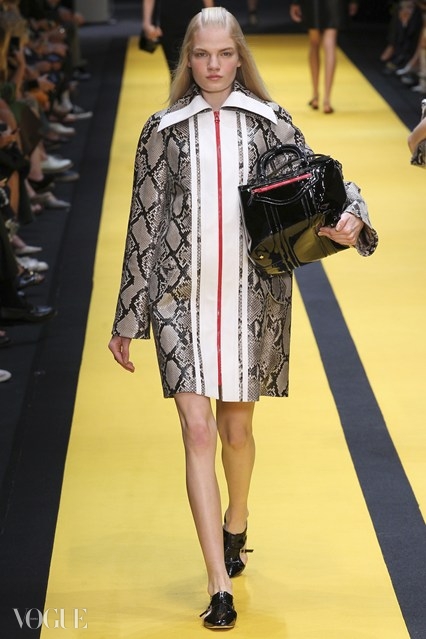
Carven
고유의 브랜드든 기존의 브랜드든 간에 라벨 이미지를 전진시키는 일은 이번 파리 패션 위크의 중요한 스토리 중 하나였다. 세 디자이너들은 미래를 향한 명확한 길을 유지함과 동시에 헤리티지 브랜드들을 끌어와 현재에 포함시키며 자신들의 몸을 풀었다. 그 세 디자이너는? 파코 라반(Paco Rabanne), 롤랑 뮤레(Roland Mouret), 까르뱅(Carven). “스포티하고 생생하며 자연스러우면서도 빠른데다 활발한 원기 회복제예요!” 까르뱅의 봄 컬렉션을 깔끔하게 요약하며 디자이너 기욤 앙리(Guillaume Henry)가 설명했다.
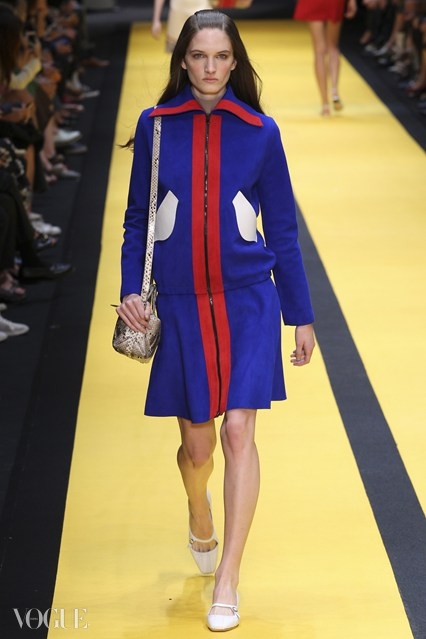
모델들이 런웨이의 노란색 짐 매트 위를 빠른 속도로 걷는 것처럼 뱀피 장식의 테일러드 코트와 옆구리에 낀 사각 스포츠 가방은 공격적이지 않고 활동적으로 보였다. 그들은 조금 더한 활기를 지닌 멋지고 새로운 까르뱅의 젊은 여성들이었다. 미묘한 변화는 고상한 파리지역의 젊은 프랑스 여성들에만 철저히 국한됐떤 까르뱅 이미지가 전세계로 확대됐음을 의미했다. 그리고 18세기 자포니즘을 닮은 패턴들로 보아 동양 쪽으로 집중된 듯 보인다. 어떤 드레스의 앞면에 커다란 글씨로 ‘까르뱅’이 일본어로 표기된 경우도 있었다. 이번 시즌 모든 사람들이 스포츠, 또는 적어도 스포티한 룩에 사로잡혀있었기에 이번 컬렉션은 더없이 에너제틱하고 귀여웠다. 모델들은 긴 머리를 날리며 하이웨이스트에 벨트를 매고 재킷을 팬츠나 슬림 드레스에 매치해 걸어나왔다가 라벨의 파리 근원으로 돌아갔다. 원색의 빨강, 파랑, 노랑은 흰색과 섞였을 때 특히 활기 넘쳤다.
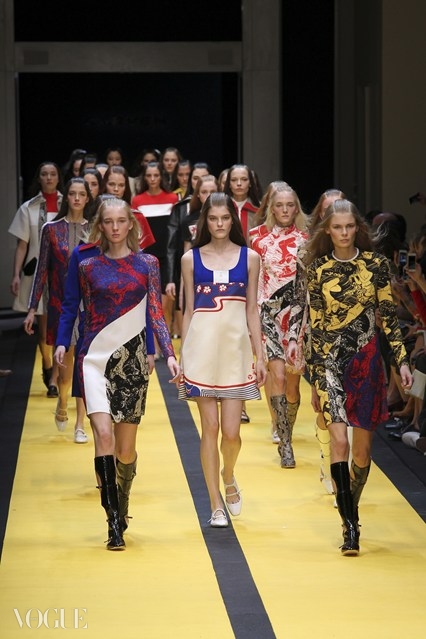
기욤은 부진했던 브랜드에 신선한 이미지를 창조하며 5년 넘게 훌륭하게 일해왔다. 물론 여전히 특유의 프렌치 시크였다. 앞 부분을 따라 내려가며 파이톤 장식이 곁들여진 반소매 코트가 대표적인 예다. 심플한 드레스의 앞면을 가르는 스포티한 스트라이프들은? 디자이너의 세계적인 성공을 향한 질주를 상징했다. 기욤 앙리가 고심을 거듭해 만든 이번 컬렉션을 요약하자면 변함없이 매력적이라는 사실. 이제 이 브랜드는 세계화되고 있으니 표현으로는 ‘카와이’라는 단어가 적절할 듯.
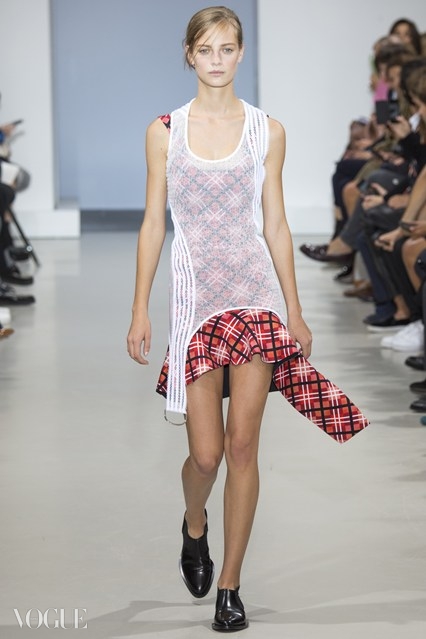
Paco Rabanne
“유기적이고 굴곡이 있는 육체의 관능!” 파코 라반 쇼에서 갈채를 받은 후 줄리엔 도세나(Julien Dossena)가 말했다. 파코? 하지만 그는 여성의 신체를 위한 옷보다 도살업자의 앞치마처럼 보이는 고정되고 경직된 메탈릭 의상으로 유명하지 않았나? 시작부터 도세나는 라벨의 이미지를 스포티한 섹시함으로 재구성했다. 메탈 그물망은 앞 단이 둥글게 파인 튜닉으로 바뀌어 똑같이 굴곡진 단의 격자무늬 드레스 위에 걸쳐졌다.
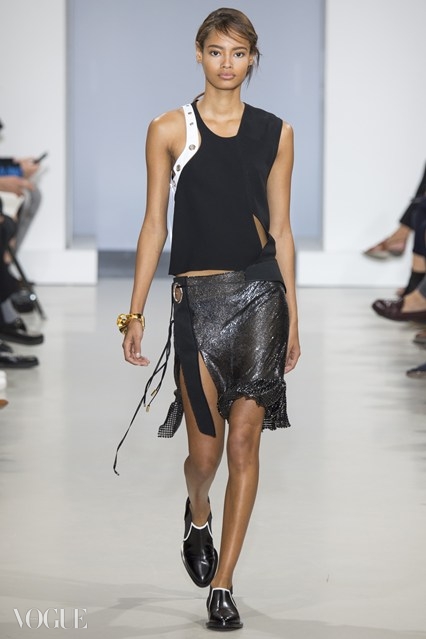
펄럭이는 스커트 위에 겹쳐 입은 톱이나 스티치로 된 그물 무늬 셔츠인데도 모든 게 움직임으로 표현됐다. 메탈릭 효과에 있어선 작은 쇠사슬 이나 작은 고리 무늬 옷감으로 단을 장식했다. 미래를 주시하는 동시에 유산에 경의를 표하는 디자이너를 찾긴 좀처럼 어렵다. 무거운 금속을 가벼운 스포츠웨어로 해석하면서 파코 라반 하우스는 새롭고 파워풀한 노래를 흥얼거리는 중.
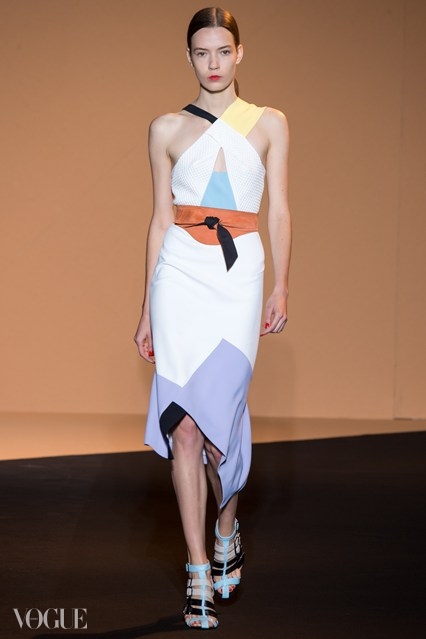
Roland Mouret
롤랑 뮤레는 힘든 상황에 놓임과 동시에 안정타점에 위치한다. 영국을 기반으로 한 이 프랑스 디자이너는 14년 전 자신의 우아하면서도 섹시한 40년대 스타일의 갤럭시 드레스로 세계적 추종자들을 얻었다. 이제 그는 세계적인 디자이너들의 성지인 뉴욕 매디슨 에비뉴에 매장을 열기 직전에 이르렀다. 덕분에 보다 자신감 넘치고 유연한 컬렉션을 만드는데 열중했던 것 같다. 이음새의 구조적인 퍼즐로 구성된 옷들은 커팅과 컬러에 있어 강렬한 경계를 만들었고 대부분 그의 고객들이 사랑하는, 다시 말해 몸매를 따라 흐르는 날씬한 라인이었다.
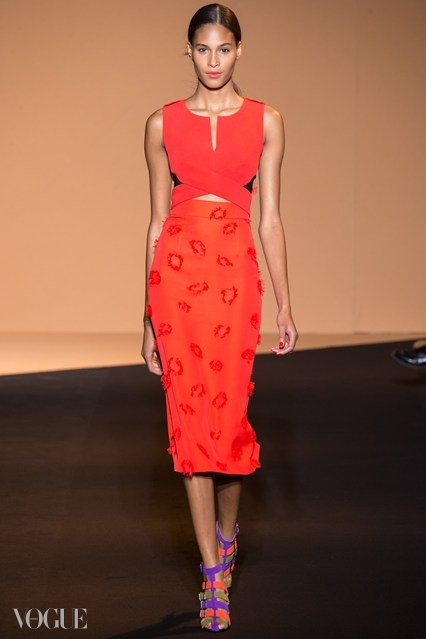
핑크, 노랑, 하양과 검정의 믹스에서 이 옷들은 기하학적 미학을 지닌 걸작으로 거듭났다. 장식으로 커다란 히비스커스 디지털 프린트가 있었지만 회색이나 검정색으로 색이 빠지며 그 효과가 크게 두드러지지 않았다. 그의 잠재 고객들을 유념한 자주색 의상과 샌들은 결코 잘못된 방향으로 흘러가지 않았다. 그런데도 여전히 자꾸 드는 걱정이 있다. 뮤레는 옷의 질감과 복잡한 컬러배합에 있어선 늘 진일보하고 있지만, 그의 이름이 향하는 곳이 별로 명확하지 않다는 것이다. 만약 목표가 뉴욕에서 높은 판매량을 달성하고 다음 도시들까지 있는 거라면 이번 컬렉션은 성공적이다. 하지만 미래를 향한 뚜렷한 계획이 없다면, 이번 컬렉션은 그저 화려한 공간에 진열될 뿐.
English Ver.
Paris Fashion Week Day One BY SUZY MENKES
Dries Van Noten’s Green Dream
“A Midsummer Night’s Dream,” said Dries Van Noten backstage, wiping a tear as the audience cheered an exceptional show.
As if! Did he imagine that we had not instantly understood this ode to nature – a miraculously updated Arts and Crafts movement from the end of the 19th-century – translated as modern, sporty clothes?
Just the sight of the furry grass and foliage carpet on the runway had suggested a green dream, even before the first birds started tweeting and then chirruping to the music, or after the models had stretched out on this fairy green floor until their outfits created a floral bed.
It was one of those unforgettable fashion moments in the spring/summer 2015 shows that will be etched in fashion memory and be part of the Van Noten oeuvre.
Maybe it was the overwhelming successful exhibition mingling artists with fashion that Dries curated at the Musée des Arts Décoratifs, extended to 2nd November, that encouraged him to turn back to nature. Yet at the same time he made these new designs dense with artistry.
The general effect was of decorative clothes, but in easy shapes, the surfaces as rich and three dimensional as trees in a forest – not to mention that mossy carpet woven by Buenos Aires-based artist Alexandra Kehayoglou.
Texture or other surface interest was primordial to the show. There were colourful silken stripes on a swingy coat or a furry sweater. Sleeveless coats, the effect as mossy and rugged as on the catwalk, were worn nonchalantly with narrow trousers, while chiffon only rarely floated on a long romantic dress. More typical were breast bands warped round a top or over bare skin, leaving glimpses of flesh.
Shorts and the ever-present trousers, as well as those wedge sandals and nature jewellery, garnered a freshness that prevented the woven textiles looking like William Morris weaves.
Dries was really romancing nature: the colours, hot with pink as if in a flower bed; a pattern pallid, as if faded by the sun; or a skirt created in tufts of purple like a psychedelic bush.
If any of the effects were done digitally, it did not look that way: more as if an apple-print fabric had been found in a rummage in an attic, along with russet embroidery. It was as though they were planted together and grew into a coat.
Words cannot describe dense detail worn so lightly, nor how the designer put together this 21st-century version of Arts and Crafts.
Dries Van Noten is famously proud of his Belgian garden. But this was more than a flower-strewn version of nature’s beauty. It was a tour de force of design and imagination – and love.
Gareth Pugh Comes Down to Earth
Stonehenge, that mysterious Druid construction in South West England, and the Wicker Man, a pagan figure from the same era, were inspirations for Gareth Pugh.
For his visual presentation in New York, by way of three separate films, and the collection he is now showing in Paris, the British designer delved deep into history yet made intelligible clothes.
Pugh is a profound thinker and his clothes are unique, even if they expressed similar ideas to those of other forward-looking designers: the importance of cut that relates to the body with as few seams as possible; and the use of tactile materials.
Those effects came together in two dresses: one in raw hessian with the texture of a sack, the other in fringed chiffon. They represented the ancient British tradition of corn dollies and the May Queen, and both were folded without seams, square to the body. The second of the two a modern woman could wear anywhere.
It was good to see a re-run of the movies, because there Pugh could present the clothes via dance, his original calling, and with ritualistic accessories like face-covering witchy hats. But as a designer he has matured, producing pieces as relatively simple as a black dress with an attached cloak-shaped coat, both decorated with pearl buttons, in yet another cultural nod – this time to British “Pearly Queens”.
“It’s about linking to long-forgotten superstitions that have a lot to do with creativity,” said Pugh, referring to ancient agriculture, harvest time, the goddess of the sea and “the idea of death and renewal”.
Since Pugh’s father is in the police force, the reference to the policeman hero of the 1973 movie, The Wicker Man, had a personal significance to the designer.
Also in the frame of this spring/summer 2015 collection were Pugh’s more familiar dresses in graphic black-and-white diamond patterns, so complicated in construction, but so streamlined on the body.
Since Pugh has been gradually making his clothes more accessible, this fine collection could not be described as a re-birth. But the clothes – like a chiffon top decorated with pearl buttons or the hessian weave – seemed down to earth, in both senses of the phrase. And the designer confirmed that trend.
“I wanted it to be more about the earth than something that landed from a space ship,” Pugh said.
Rochas: Lightening up
For his second outing at Rochas, designer Alessandro Dell’Acqua has lightened up – and then some! His outfits were, in this order, veiled, sheer and totally transparent, with those putting less flesh on show and leaving more of the bust and body to the imagination looking the most appealing.
All this sounds rather better in the designer’s own explanation of his theme: “between virginal shyness and blooming sensuality”. It translated as chaste, almost nun-like little collars leading downwards to visible breasts.
After a rather heavy, couture approach last season, the airy lightness was welcome and Dell’Acqua would surely say that a weightless organza belted coat could be worn with a slip underneath in the real world, to cover exposure. Other openings on flesh were beautifully done, as with a round, lace cut-out at the hem of an over-the-knee skirt.
Another idea to draw attention downwards was the footwear: socks and ankle-strap shoes fluttering with metallic green feathers.
The story for Rochas was written in the bold “R” symbol – a rather un-cool flirtation with a logo – and in the fine workmanship, as when little flowers would bud from neck to calf on a simple dress. There were other stories: black, more tailored pieces and a brief glow of gold.
The show had some sense of refreshing Rochas, without finding it a new position in a crowded Paris calendar.
Balenciaga: A sporty dynamism from Wang
Baby North West was silent backstage at the Balenciaga show, but her parents Kim and Kanye each had something to say to designer Alexander Wang.
“I loved the floor,” they said, almost in unison, referring to mirrored tiles making a pathway across a raised glass catwalk, where dry ice out billowed light clouds.
Fortunately, this exceptional set did not completely outshine the show. Although Wang’s use of mesh was repetitive, his premise – to dynamise the Balenciaga image via sport – was in concert with his previous collections and personal vision. And the net effects lightened up the concept of decoration.
“Opulence and embellishment – but I wanted to find my way of showing it,” said Wang, who took his usual run around the square stage.
I would defy anyone who claimed to see exactly what was going on in this high-octane, fast-paced show. But here’s the gist: a sport shirt and skirt woven in mesh, the top covered with a transparent glaze; a slim stretch dress, with ruching shaping the bodice into an “X” at the neck; a semi-transparent top with high-waist shorts; and various tailored pieces, such as jackets and coats, worn over dresses with filmy textures.
It added up to a youthful dynamism, with the strong sports element softened by pastel colours including lilac, pale blue and pinky beige.
It is to Wang’s credit that he has the vision and energy to keep Balenciaga running at high speed. But what exactly is the goal?
There are products for people to buy, including striking mirrored eyeglasses. The clothes are modern and streamlined, and if the prices are anywhere near affordable, they should sell well.
But the kernel of Balenciaga, what it stands for, is not Cristóbal Balenciaga, with his heritage of nobility. It is Alexander Wang himself. The clothes are an upscale version of his personal creative image. And seen in that light, it was a good, strong show.
Cédric Charlier Does it His Way
The visible stitches were so fine, like a skeletal tracing of the body on a perfectly tailored jacket, that it seems churlish to say, “Yawn! Seen it all before.”
Cédric Charlier has a naive way of presenting his offering as though he had invented it. Yet he executes these not-so-original ideas so well that his approach is forgivable.
The basting-stitch jacket that opened the show was partnered with satin, horizontal striped trousers, and a line of gilded satin made the look a glam one. Although, perhaps inevitably with this ‘stitches’ story, bits of fabric hung around a skirt hemline.
The undone, outside/inside look, which must have been around at least since Margiela brought it to the runway two decades ago, was executed by Charlier with refreshing colour combinations like turquoise with grass green or flame red.
Feathery fringes around cut-out knits were a different way of following the body’s lines, and were neat and tidy in spirit compared to Rei Kawakubo’s aggressive ‘destroyed’ look.
But Charlier worked it his way, especially in the final third of the show where layers of frills on pretty dresses were discreetly done.
Vionnet: Dancing to a Grecian Tune
Vionnet had a vision, a theme and sensitive presentation – and it took the brand a step forward in flat Grecian sandals.
The idea of showing pale Grecian-style dresses, wide cummerbunds at the waist, and having a shadow of the runway figure dance, stretch and walk differently that the real-life thing – by some digital wizardry – was smart, subtle and modern.
The story was, as ever – considering the history of Madeleine Vionnet – fine fabric draped across the body, perhaps in two different tones such as white and beige, black and white or with a dash of Grecian blue.
But there were many other elements added from Goga Ashkenazi and her design team, who all took a bow. There were brief dresses, shorts, narrow pants and short, pleated toga skirts.
And then, amongst all this grace, like the snaking belt that infiltrated a waistline, came the dreaded word: sex. Visible bras, cut-outs between the legs revealing stocking suspenders, and harnesses across the chest.
The elegant, balletic look of the collection just didn’t need this sexing up.
Paris Fashion Week Day Two BY SUZY MENKES
Balmain: The Sexy Spirit of Youth
The Balmain show for Summer 2015 handed the sexual power over to women. More specifically, to one woman: Rihanna.
“I keep in my mind my generation, and I remember Rihanna walking out of the Crazy Horse at the after-party of my last show,” said Olivier Rousteing, Balmain’s designer.
“I wanted to explore ‘sexy’, see-through fabrics and to remember Madonna’s book Erotica,” said the designer, who believes that the internet proves that strong women – especially music stars – refuse to be bound by censorship.
So imagine either of the above-mentioned women (Rihanna now, Madonna in her heyday) sitting in the audience at this week’s Balmain show.
The two stars would certainly have seen some flesh.
On the runway were white or black grills of fabric, transparent plastic that revealed the skin beneath, cut-outs at the midriff, see-through black chiffon at the legs, hazard-yellow dresses with strategic gaps or onesies with rivulets of sparkling stripes.
Skin for skin, there cannot have been so much on display since Tom Ford’s London show. Significantly, and perhaps because of the generation gap between the two designers, the Balmain clothes went down the runway with a swagger and not a snigger from the audience.
The first protective layer to potential vulgarity is the Balmain ateliers, whose work is couture standard. A white dress that fell like a shower over the body, with just a stretch of firmer fabric across the bust, was a treasure. Those bands across the body, from a Parisian studio, look like graceful cover-ups, not bondage.
Then there was the tailoring: crisp in black and white stripes and checks, or a black, white and yellow pantsuit. Yes, it would take some guts to walk down the street in a top vertically striped with red, royal blue, canary yellow and white. But the woman who wears these clothes wants to be noticed. And she steps right into a limousine. Read: Kim Kardashian was front row.
Balmain may not be to everybody’s taste. But I would not describe these seductive clothes as ‘tasteless’. They had all the optimism of youth and an outrageous sense of fun.
Rousteing is certainly doing something right, for Balmain president Alain Hivelin said backstage that sales were up 25 per cent in the last quarter, and that such was the demand from buyers that they were turning away potential clients.
Olivier summed up his happy-go-lucky attitude when he described his feelings as Rihanna pulled all the attention at that after-party in her transparent Balmain top.
“Was I jealous?” He asked. “No, I was inspired.”
Lanvin: Playing to Womanly Emotions
In satin and pearls, jersey and brocade, mesh and lace, Lanvin’s birthday present to celebrate their 125th anniversary was a bouquet of fashion for the 21st-century women, from Alber Elbaz.
“I am going back to the girls I love,” said the designer, referring to the show’s powerful, even emotional opening, as models who are still willowy, but now womanly, walked the runway: Amber Valetta in a slim dress with a waterfall of pearl buttons and a slither of bared skin, and Violetta Sanchez, who opened the show in a soft column of fabric with one sliced-off shoulder.
The idea of offering clothes not just to different women, but for deeper womanly needs and emotions is so right for today. And within that vision, Alber Elbaz packed in everything from severe tailoring – marked with basting stitches as though its wearer were leaving home in a hurry – to brocade, that grand, tactile material, coaxed into a pair of skinny pants and worn with a taut tuxedo jacket.
It may be significant that the two great axis of the modern women’s wardrobe, Lanvin and Prada, both offered brocade for Summer 2015. But Alber’s vision was also about elements from the history of his mother brand.
In re-visiting the archive, he introduced echoes of the Twenties, Lanvin’s heartland, from the prancing figure of a faun, to Jeanne Lavin’s particular shade of sky blue, to the symbols of the label’s perfume, Arpège.
I thought of that fragrance’s logo, created before that word had become a brand cliché. Arpège’s mother and child on their way to a ball must be the only image used in high fashion that embraces family life.
The women in Elbaz’s collection looked like they had lived and loved and that they brought all that personal experience with them to the designer’s fine clothes, from an oversized jacket to a chiffon puff of paisley pattern.
That is why this collection was filled with an emotion that you rarely find on the runway. These were clothes for living, or, as an ecstatic Elbaz, who received a prolonged ovation put it, these were “very happy clothes.”
Nina Ricci: Au Revoir to Mr Copping
I had been waiting to see which designer might have been influenced by the stirring ceremonies in France this summer reflecting the end of World War II. And no one could have done that with more delicacy and gentle optimism than Peter Copping at Nina Ricci.
He cited that British wartime phrase, “Make do and mend,” but working in Paris at a couture house, the wispy threads at the hem of a fragile lace cocktail dress looked more elegant than in need of repair.
The show started with a square-shouldered jacket and a touch of the 1940s. But opened up by wide set lapels and a split side to a pink skirt, the effect was post-war positive.
Sensual in a subtle way, with wide necks and prints of bulbous tulips, Copping did a fine job of segueing day into night with his pretty but lightweight gowns.
The designer is picture perfect at Nina Ricci, but this is expected to be his last season before he moves to Oscar de la Renta in New York.
Since Copping has that rare skill of making an offering to a woman’s wardrobe each season that is neither dull nor outré, he will be an asset to Oscar, as he is to fashion.
Rick Owens: A Perverse Fragility
The light that shone through the tulle dresses at the Rick Owens show brought a whimsical airiness to the vision of a designer better known for cultish figures stomping in hefty shoes.
There was still that heavy footwear – clogs with mammal claws, that were a cross between the historic Dutch kind and a sci-fi futuristic version.
But the clothes were as light as the proverbial feather, and in colours like seaweed and mossy ginger. The models’ loose hair seemed almost fairylike – the most unlikely word to associate with Owens.
“I thought, what is the most perverse thing I could do? Something light and fragile like tulle,” said Rick. “Then, how do I make that architectural, modern and Brutalist?”
The designer did just that with A-line dresses, some deliberately transparent, others worn in layers, maybe with a bunching of fabric at the side of a hemline. Occasionally the material had more body and stood up around the shoulders and neck.
Can it be only a year since the extraordinary sight of American sorority sisters ‘stepping’ on the Paris runway, their fierce movements showing off hefty gladiator leather and toga dresses?
This show was the diametric opposite in its fragility and gentleness. The music from Polish composer Wojciech Kilar, who died last year, was soft but haunting.
But this being Rick Owens, there was one weird touch: snakes embroidered on the tulle, ready to hiss at this incarnation of the designer’s fragile new woman.
Carven in Action
Moving a label’s image forward – whether it’s your own or an existing brand – is one of the stories of the Summer 2015 Paris season. Three designers flexed their muscles, pulling heritage brands into the now, while keeping a clear path to the future. Paco Rabanne, Roland Mouret and Carven.
“Sporty, graphic, spontaneous, speedy, dynamic – and a tonic,” said the designer Guillaume Henry, neatly summing up his Spring/Summer 2015 Carven collection.
As the models strode the yellow gym mat of a runway, walking at high speeds, a tailored coat trimmed with snakeskin and a square sports bag squashed under the arm, they looked energetic, but not aggressive. These were just those nice, fresh young Carven girls with a bit more vigour.
The subtle change is that the Carven image, which was, quintessentially, young French women from a polite Paris neighbourhood, has now extended across the world. And especially to the East, it seems, with dense patterns that resembled Japonisme drawings from the eighteenth century. There was also the bold label on the front of one dress, which translated as “Carven” in Japanese.
Since everyone is mad for sport this season – or at least the sporty look – the collection was both energetic and cute. The models walked out, long hair flying, belts at high waists and the occasional jacket with trousers or slim dresses, going back to the label’s Paris roots. The red, blue and yellow primary colours were lively, especially when mixed with white.
Guillaume has done a fine job over just five years, creating a fresh image for a brand that was stagnating. It is still French chic in an idiosyncratic way: a short-sleeved coat trimmed with python down the front edges was an example. Sporty stripes slicing down the front of a simple dress were symbolic of the designer being on the straight track to international success.
But it was all still instinctively Carven. The way to sum up Guillaume Henry’s elaboration on a theme for spring 2015 was, as ever, “charming”. And now that the brand is going global, should that word be “kawaii”?
Paco Rabanne
“Organic, curvy, the sensuality of the body,” said Julien Dossena after his much cheered Paco Rabanne show.
Paco? But wasn’t he famous in fashion for riveted, stiff metallic outfits that looked more like a butcher’s apron than a garment for a woman’s body?
From the start, Dossena remade the label’s image with a sporty sexiness. That metal mesh was translated into a tunic, the hemline scooped up at the front over a plaid dress with an equally curvy hem.
Even if it was just a shirt with a web of stitching or tops layered over flesh above a swinging skirt, everything was expressed in movement. When it finally came to metallic effects, there were narrow pieces of chainmail or ringlets to decorate the hemline.
It is rare to find a designer who is both forward-looking and respectful of a heritage. By translating heavy metal into light sportswear, Paco Rabanne sang a new and powerful song.
Roland Mouret
Roland Mouret is in a sweet spot at the same time that he’s in a hard place. The British-based French designer built an international following with his elegantly sexy Forties-style Galaxy dress 14 years ago. Now, he is on the eve of opening a store on Madison Avenue – the Holy Grail for any international designer.
And he seems to have put his heart into creating a confident and flexible collection. The clothes, made up of structural puzzles of seaming, produced strong lines of cut and colour, mostly in those slim, follow-the-body lines that his customers love. In a mix of pink, yellow, white and black, they were geometric masterpieces.
Where colour drained away to grey or black, the effect was less striking, although there was a digital print of a large hibiscus as decoration.
Mindful of his potential clients, the outfits and sandals in colours like purple never took a misstep.
There is still a niggle of concern however. Mouret may be inching forward in terms of fabric textures and ever-more complex colour blocking. But just where this name is going is less certain. If the goal is to hit high sales in New York, with other cities to follow, the current collection is all for the good.
But it might leave Roland Mouret stuck in a certain, ‘glamorous’ place with no obvious forward path.
- 에디터
- 보그 인터내셔널 에디터 / 수지 멘키스(Suzy Menkes)
- 포토그래퍼
- InDigital
추천기사
-

푸드
프라다의 아시아 첫 단독 레스토랑 '미 샹'
2025.03.18by 오기쁨
-

아트
양혜규와 김윤신, 해외 개인전 개최
2025.03.13by 이정미
-

셀러브리티 스타일
간드러진 '이 슈즈' 하나면 가을까지 끝!
2025.04.01by 황혜원
-

패션 아이템
2025년 예쁜 상의에는 1970년대 감성이 있어야 합니다
2025.04.01by 황혜원, Paulina Berges
-

패션 트렌드
봄만 되면 생각나는 색, 사랑스러운 핑크를 입는 방법 6
2025.03.31by 안건호, Talia Abbas
-

셀러브리티 스타일
프라다에서 루이 비통, MTV에서 코첼라까지! 리사의 베스트 룩 16
2025.03.31by 황혜원, Olivia Allen
인기기사
지금 인기 있는 뷰티 기사
PEOPLE NOW
지금, 보그가 주목하는 인물


